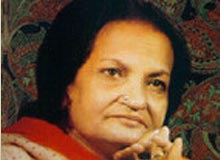
Begum Akhtar was born on 7th October, 1914 in Faizabad town of Uttar Pradesh. Her name was Akhtaribai Faizabadi though she was much popular as Begum Akhtar. Her family belonged to the upper class of the society and was not even inclined towards music. She showed interest in music at a
very young age and was sent to train under
the great sarangi player, Ustad Imdad Khan. Later, she learnt classical
music from great exponents of this field like Mohammad Khan, Abdul Waheed Khan and Ustad Jhande Khan Saheb. Read the life history of Begum Akhtar in this short biography.
At the tender age of fifteen she gave her first public performance. People were moved by her voice and she gained instant recognition. Her ghazals even impressed the famous poetess of India, Sarojini Naidu and was appreciated at a concert that was organized for helping victims of Bihar earthquake. Her first recording was done by the Megaphone Record Company and they released many gramophone records with her melodious Ghazals, thumris, dadras, etc. In 1930's, Begum Akhtar also acted in a few Hindi films which include Ameena (1934), Mumtaz Begum (1934), Jawaani Ka Nasha (1935), Naseeb Ka Chakkar (1935). In all these films, she sang all her songs herself.
Begum Akhtar moved back to Lucknow after a while where the renowned director Mehboob Khan approached her for a film titled "Roti". The music was composed by the famous Anil Biswas. The movie was released in the year 1942 in which Begum Akhtar had sung six Ghazals. Unfortunately, four of the Ghazals were deleted due to some tension between the producer and the director. The film was appreciated by one and all and the music took the industry by storm.
Begum Akhtar married barrister Ishtiaq Ahmed Abbasi in the year 1945. Due to family restrictions, Begum Akhtar could not sing for almost five years. She fell ill and her only medicine was music. In the year 1949, she returned to record at the Lucknow Radio station and sang three Ghazals and a dadra. She felt so satisfied and happy that she wept with joy. She then continued to give public performances and sing in concerts till she passed away.
Begum Akhtar was persuaded by Madan Mohan, a famous music director to sing in two movies "Daana Paani" (1953) and "Ehsaan" (1954). The songs "Aye Ishq Mujhe Aur to Kuch Yaad" and "Hamein Dil Mein Basa Bhi Lo" were absolutely melodious and were liked by one and all. Her last movie stint was that of a classical singer in Satyajit Ray's film "Jalsa Ghar". Begum Akhtar was a refined Ghazal singer and was called as Mallika-e-Ghazal or the Queen of Ghazals. Her style of singing is inimitable and few can match upto her style. Most compositions were self composed and based on Ragas.
Begum Akhtar performed last in a concert in Ahmedabad. That day she felt that her voice was not upto the mark and raised her pitch. This put much stress on her and her health deteriorated. The situation became critical and she had to be rushed to the hospital. She breathed her last on 30th October 1974, leaving many fans disappointed and heart broken.
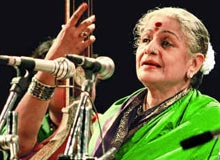 M.S Subbulakshmi is a name that is synonymous with the world of Carnatic music. This flawless singer whose voice had a divine power is the first singer in India to be presented with the Bharat Ratna, the highest award given to any civilian. Born on 16th September, 1916 in Madurai, Tamil Nadu, this singer had a family that had a musical background. Her
M.S Subbulakshmi is a name that is synonymous with the world of Carnatic music. This flawless singer whose voice had a divine power is the first singer in India to be presented with the Bharat Ratna, the highest award given to any civilian. Born on 16th September, 1916 in Madurai, Tamil Nadu, this singer had a family that had a musical background. Her 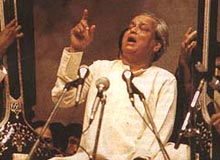 One of the most famous classical musicians in India was undoubtedly Pandit Kumar Gandharva. His real name was Shivaputra Siddharamayya Komkali. Pandit Kumar Gandharva was born on 8th April, 1924 in a place called Dharwad located in Karnataka. The most unique thing about him was that he refused to be tied down by any kind of Gharana and believed in being innovation and trying out his own new styles. The life history of Pandit Kumar Gandharva is truly fascinating. Read this short biography of Pt. Kumara Gandharv.
One of the most famous classical musicians in India was undoubtedly Pandit Kumar Gandharva. His real name was Shivaputra Siddharamayya Komkali. Pandit Kumar Gandharva was born on 8th April, 1924 in a place called Dharwad located in Karnataka. The most unique thing about him was that he refused to be tied down by any kind of Gharana and believed in being innovation and trying out his own new styles. The life history of Pandit Kumar Gandharva is truly fascinating. Read this short biography of Pt. Kumara Gandharv. 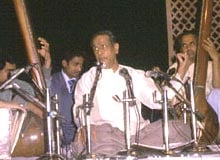 One of the most prominent and legendary Hindustani vocalist living today is
One of the most prominent and legendary Hindustani vocalist living today is 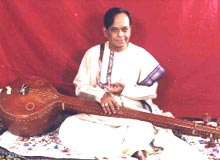 One of the most famous names associated with Classical
One of the most famous names associated with Classical 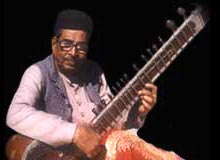 One name that truly epitomizes
One name that truly epitomizes 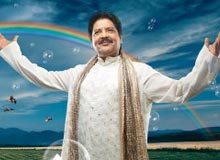 Udit Narayan is one of the most popular singers of the Hindi film industry. This multi talented
Udit Narayan is one of the most popular singers of the Hindi film industry. This multi talented  Sonu Nigam is one of the most popular singers of Bollywood. He is a teen idol who has inspired thousands of young singers across the country. This talented singer was born in Faridabad district of Haryana on July 30th, 1973. He did his schooling from J.D. Tytler School in Delhi. Thereafter he moved to Bombay to pursue his dream of making a career in music. Given here is a short biography of Sonu Nigam.
Sonu Nigam is one of the most popular singers of Bollywood. He is a teen idol who has inspired thousands of young singers across the country. This talented singer was born in Faridabad district of Haryana on July 30th, 1973. He did his schooling from J.D. Tytler School in Delhi. Thereafter he moved to Bombay to pursue his dream of making a career in music. Given here is a short biography of Sonu Nigam. 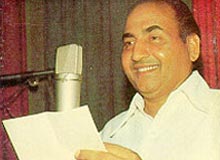 One of the greatest playback singers of India, Mohammed Rafi is considered no less than a genius when it comes to varied styles of music. Born on December 24th, 1924, this great soul had the perfect blend of melody, emotions and energy, which reflected greatly in his songs. Be it the classically inclined songs of Baiju Bawara or the foot tapping songs of Kashmir Ki Kali, Muhammad Rafi gave each song the treatment it deserved. His contribution to the Hindi film industry has been fabulous and perhaps no singer till date has managed to capture the hearts of fans the way Mohamed Rafi has. We capture the fascinating life history of Rafi in this short biography of Mohd. Rafi.
One of the greatest playback singers of India, Mohammed Rafi is considered no less than a genius when it comes to varied styles of music. Born on December 24th, 1924, this great soul had the perfect blend of melody, emotions and energy, which reflected greatly in his songs. Be it the classically inclined songs of Baiju Bawara or the foot tapping songs of Kashmir Ki Kali, Muhammad Rafi gave each song the treatment it deserved. His contribution to the Hindi film industry has been fabulous and perhaps no singer till date has managed to capture the hearts of fans the way Mohamed Rafi has. We capture the fascinating life history of Rafi in this short biography of Mohd. Rafi. 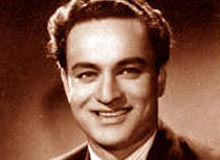 Mukesh was nicknamed as The Man with the Golden Voice and his songs are true
Mukesh was nicknamed as The Man with the Golden Voice and his songs are true 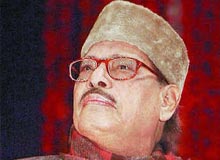 Manna Dey is undoubtedly one of the best singers that India has. This versatile singer has sung numerous songs and shared the limelight with some legends like
Manna Dey is undoubtedly one of the best singers that India has. This versatile singer has sung numerous songs and shared the limelight with some legends like 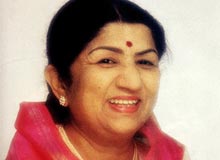 Lata Mangeshkar is one of the best singers of the Hindi film industry. She is listed in the
Lata Mangeshkar is one of the best singers of the Hindi film industry. She is listed in the 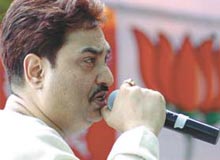 Kumar Sanu is one of the most popular playback singers of Bollywood. He holds the Guinness Book world record for recording the maximum number of songs in a day, which are 28. He was born on 23rd September, 1957 and was named Kedernath Bhattacharjee. His father, Pashupati Bhattacharjee was a renowned classical singer and composer who noticed his son's talent at a very young age. When he was still very young, his father trained him to sing classical music and play the tabla. Given here is a small biography which captures the life history of Kumar Sanu.
Kumar Sanu is one of the most popular playback singers of Bollywood. He holds the Guinness Book world record for recording the maximum number of songs in a day, which are 28. He was born on 23rd September, 1957 and was named Kedernath Bhattacharjee. His father, Pashupati Bhattacharjee was a renowned classical singer and composer who noticed his son's talent at a very young age. When he was still very young, his father trained him to sing classical music and play the tabla. Given here is a small biography which captures the life history of Kumar Sanu. 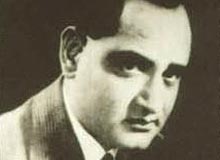 The very name K.L Saigal conjures up an image of a superstar who ruled the screens long before people heard of Amitabh Bachchan and Rajesh Khanna. Not many are aware of the achievements of this great persona and his contributions to the Hindi
The very name K.L Saigal conjures up an image of a superstar who ruled the screens long before people heard of Amitabh Bachchan and Rajesh Khanna. Not many are aware of the achievements of this great persona and his contributions to the Hindi 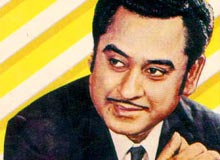 Born as Abhas Kumar Ganguly on 4th August, 1929, this great singer known as Kishore Kumar, affectionately called Kishore Da, was one of those very few singers who took risks and experimented with
Born as Abhas Kumar Ganguly on 4th August, 1929, this great singer known as Kishore Kumar, affectionately called Kishore Da, was one of those very few singers who took risks and experimented with 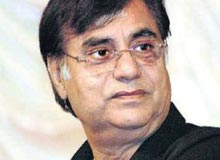 Jagjit Singh is one of the most famous Ghazal singers of the modern times. In an era where the current generation is headed towards rock and hip hop music, it is refreshing to see them cherish Jagjit Singh ghazals as well. Born in Ganganagar located in Rajasthan on 8th February, 1941, the name Jagjit means the one who triumphs over the world. His father Sardar Amar Singh Dhiman was a Government official and his mother Sardarni Bachchan Kaur had a religious family background. He has four sisters and two brothers and is fondly addressed as "Jeet" by his family. Check out this biography of Jagjit Singh, which captures his
Jagjit Singh is one of the most famous Ghazal singers of the modern times. In an era where the current generation is headed towards rock and hip hop music, it is refreshing to see them cherish Jagjit Singh ghazals as well. Born in Ganganagar located in Rajasthan on 8th February, 1941, the name Jagjit means the one who triumphs over the world. His father Sardar Amar Singh Dhiman was a Government official and his mother Sardarni Bachchan Kaur had a religious family background. He has four sisters and two brothers and is fondly addressed as "Jeet" by his family. Check out this biography of Jagjit Singh, which captures his  Begum Akhtar was born on 7th October, 1914 in Faizabad town of Uttar Pradesh. Her name was Akhtaribai Faizabadi though she was much popular as Begum Akhtar. Her family belonged to the upper class of the society and was not even inclined towards music. She showed interest in music at a
Begum Akhtar was born on 7th October, 1914 in Faizabad town of Uttar Pradesh. Her name was Akhtaribai Faizabadi though she was much popular as Begum Akhtar. Her family belonged to the upper class of the society and was not even inclined towards music. She showed interest in music at a 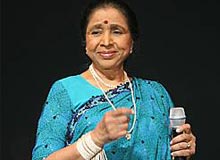 With versatility as her middle name, the famous Asha Bhosle still sings the way she used to during her prime. Though she is over 70 years of age, she still continues to give stiff competition to singers who are half her age. This talented singer can sing a ghazal and a peppy cabaret number with amazing levels of energy and style. Be it the romantic "Oh Mere Sona Re" or the sensuous "Aaiye Meherban" or the peppy "Kambakth Ishq", Asha Bhonsle can add life to any song. Her life history is no less than a roller coaster ride. Check out the biography of Asha Bhonsle as given here.
With versatility as her middle name, the famous Asha Bhosle still sings the way she used to during her prime. Though she is over 70 years of age, she still continues to give stiff competition to singers who are half her age. This talented singer can sing a ghazal and a peppy cabaret number with amazing levels of energy and style. Be it the romantic "Oh Mere Sona Re" or the sensuous "Aaiye Meherban" or the peppy "Kambakth Ishq", Asha Bhonsle can add life to any song. Her life history is no less than a roller coaster ride. Check out the biography of Asha Bhonsle as given here. 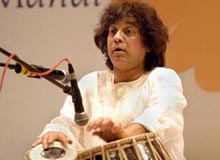 Popularly known as Tabla Maestro, Ustad Zakir Hussain is the son of the renowned tabla player Ustad Allah Rakha. He was born on 9th March, 1951 and showed much interest in tabla since a very young age. This child prodigy started touring by the time he was twelve and started to perform at concerts and gain much recognition and fame. He went to in St. Michael's High School in Mahim and did his graduation from St. Xavier's Mumbai. In his twenties, he started to tour the United States frequently and performed in not less than 150 concerts per year. Read the fascinating life history of the famous musical genius in this biography of Zakhir Hussein.
Popularly known as Tabla Maestro, Ustad Zakir Hussain is the son of the renowned tabla player Ustad Allah Rakha. He was born on 9th March, 1951 and showed much interest in tabla since a very young age. This child prodigy started touring by the time he was twelve and started to perform at concerts and gain much recognition and fame. He went to in St. Michael's High School in Mahim and did his graduation from St. Xavier's Mumbai. In his twenties, he started to tour the United States frequently and performed in not less than 150 concerts per year. Read the fascinating life history of the famous musical genius in this biography of Zakhir Hussein. 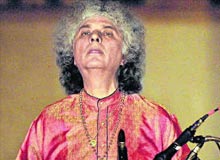 Pandit Shivkumar Sharma is a very famous
Pandit Shivkumar Sharma is a very famous 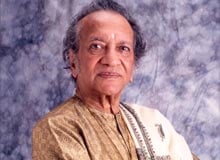 Pandit Ravi Shankar is a living legend who is a genius Sitar player. Born on 7th April, 1920 in Banaras, his family was a Bengali Brahmin family who named him Ravindra Shankar. Shyam Shankar,
Pandit Ravi Shankar is a living legend who is a genius Sitar player. Born on 7th April, 1920 in Banaras, his family was a Bengali Brahmin family who named him Ravindra Shankar. Shyam Shankar, 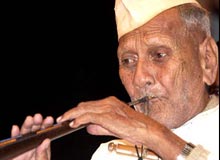 Ustad Bismillah Khan was undoubtedly a gem that India is
Ustad Bismillah Khan was undoubtedly a gem that India is 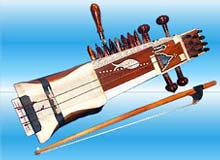 Sitar
Sitar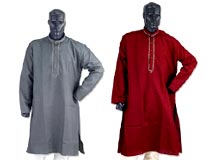 Kurta is a term used to refer to a long loose shirt, the length of which falls below or may be just above the knees of the wearer. In the olden times, it was primarily worn by men, but today, it has become a unisex dress that both
Kurta is a term used to refer to a long loose shirt, the length of which falls below or may be just above the knees of the wearer. In the olden times, it was primarily worn by men, but today, it has become a unisex dress that both 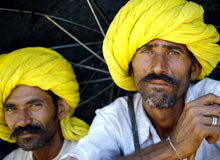 In India, one can spot many men wearing turban. Well, turban is tied not for the sake of fashion, but because it has a lot of significance in the lives of Indians. The hair turban is a headdress that
In India, one can spot many men wearing turban. Well, turban is tied not for the sake of fashion, but because it has a lot of significance in the lives of Indians. The hair turban is a headdress that 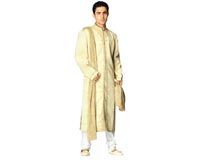 Sherwani is a long coat resembling achkan in styling. It is buttoned upto the collar and lengthwise it is usually below the knee. It adds to the charm
Sherwani is a long coat resembling achkan in styling. It is buttoned upto the collar and lengthwise it is usually below the knee. It adds to the charm 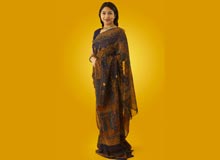 Sari is one of the most wonderful dresses worn by Indian women. Infact, when one thinks of a typical Indian woman, the first thing that strikes the mind is a woman clad in sari, who is wearing the solah shringar including bindi, chudi, kajal and many more. Apart from highlighting the characteristic image of an Indian woman, the Indian dress saree also adds grace to a woman's personality. To know as to how as wear a Sari, read on.
Sari is one of the most wonderful dresses worn by Indian women. Infact, when one thinks of a typical Indian woman, the first thing that strikes the mind is a woman clad in sari, who is wearing the solah shringar including bindi, chudi, kajal and many more. Apart from highlighting the characteristic image of an Indian woman, the Indian dress saree also adds grace to a woman's personality. To know as to how as wear a Sari, read on.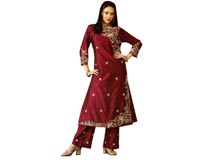 Salwar kameez is the traditional Indian
Salwar kameez is the traditional Indian 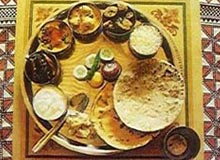 The cuisine of Rajasthan is primarily vegetarian and offers a fabulous variety of mouthwatering dishes. The spice content is quite high in comparison to other Indian
The cuisine of Rajasthan is primarily vegetarian and offers a fabulous variety of mouthwatering dishes. The spice content is quite high in comparison to other Indian 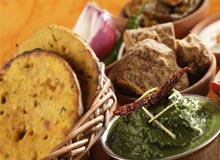 The cuisine of Punjab has an enormous
The cuisine of Punjab has an enormous 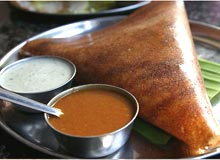 The cuisine of South India is known for its light, low calorie appetizing dishes. The traditional food of South India is mainly rice based. The cuisine is famous for its wonderful mixing of rice and lentils to prepare yummy lip smacking dosas, vadas, idlis and uttapams. South
The cuisine of South India is known for its light, low calorie appetizing dishes. The traditional food of South India is mainly rice based. The cuisine is famous for its wonderful mixing of rice and lentils to prepare yummy lip smacking dosas, vadas, idlis and uttapams. South 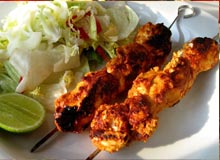 Mughlai cuisine is one of the most popular
Mughlai cuisine is one of the most popular 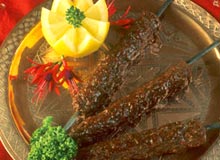 Kashmiri food that we have today in
Kashmiri food that we have today in 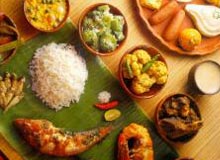 Bengali cuisine is appreciated for its fabulous use of panchphoron, a term used to refer to
Bengali cuisine is appreciated for its fabulous use of panchphoron, a term used to refer to 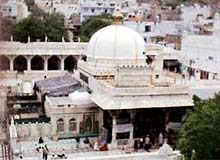 One of the prime attractions in Mysore, Karnataka is the famous Srirangapatnam fort. Built in the year 1537 by a feudal lord, this magnificent fort is considered to be the second toughest fort of India. The Srirangapatna Fort has four main entrances known by the names of Delhi, Bangalore, Mysore and Water and Elephant gates.
One of the prime attractions in Mysore, Karnataka is the famous Srirangapatnam fort. Built in the year 1537 by a feudal lord, this magnificent fort is considered to be the second toughest fort of India. The Srirangapatna Fort has four main entrances known by the names of Delhi, Bangalore, Mysore and Water and Elephant gates. 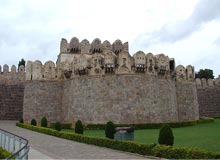 A majestic fortress on the outskirts of Hyderabad, Golconda Fort is one of the grandest forts of India. Built around 12th and 16th Century by various Qutub Shahi rulers, this fort has a rich history that is almost 400 years old. It is definitely a place worth visiting in case you are traveling to the south of India. One can see the elegance and grandeur of the Nawabi culture on visiting the famous Golkunda Fort of Andhra Pradesh. A tour around
A majestic fortress on the outskirts of Hyderabad, Golconda Fort is one of the grandest forts of India. Built around 12th and 16th Century by various Qutub Shahi rulers, this fort has a rich history that is almost 400 years old. It is definitely a place worth visiting in case you are traveling to the south of India. One can see the elegance and grandeur of the Nawabi culture on visiting the famous Golkunda Fort of Andhra Pradesh. A tour around 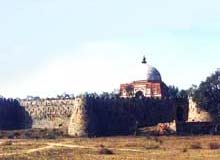
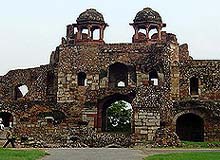 The Purana Quila or the old fort was
The Purana Quila or the old fort was 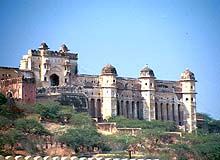 The Amber fort is set in a picturesque location a little away from Jaipur, the capital of Rajasthan state. The Amber Fort presents a fascinating blend of Hindu and Muslim architecture. Raja Man Singh built the Amber fort in the sixteenth century (the construction of the Amber Fort was started in 1592). The Amber Fort is built in red sandstone and white marble. The palace complex of the Amber fort has very attractive apartments. This complex was built by Raja Man Singh, Mirza Raja Jai Singh and Sawai Jai Singh, over a period of about two centuries.
The Amber fort is set in a picturesque location a little away from Jaipur, the capital of Rajasthan state. The Amber Fort presents a fascinating blend of Hindu and Muslim architecture. Raja Man Singh built the Amber fort in the sixteenth century (the construction of the Amber Fort was started in 1592). The Amber Fort is built in red sandstone and white marble. The palace complex of the Amber fort has very attractive apartments. This complex was built by Raja Man Singh, Mirza Raja Jai Singh and Sawai Jai Singh, over a period of about two centuries. 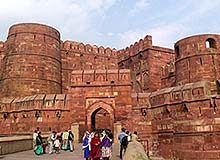 The
The 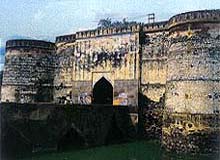 Lohagarh fort or the Iron fort was built in
Lohagarh fort or the Iron fort was built in 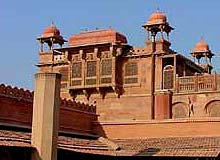 Located in Bikaner, the Junagarh fort is one of the most impressive fort
Located in Bikaner, the Junagarh fort is one of the most impressive fort 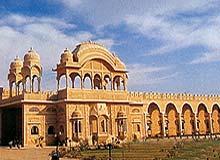 One of the oldest and massive forts of Rajasthan, Jaisalmer fort is located in
One of the oldest and massive forts of Rajasthan, Jaisalmer fort is located in 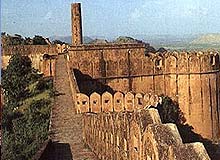 The magnificent Jaigarh fort is located near Jaipur. Jaigarh fort or the fort of victory was constructed by Sawai Jai Singh of Jaipur in 1726. The Fort stands in the middle of thorn and scrub hills, which impart it a stout look. The Jaigarh fort gives an amazing view of the city below. The purpose of building the Jaigarh fort was to strengthen the defense of Amber. It is the main reason why the Jaigarh fort is quite plain and simple. The fort is surrounded by a moat and all other arrangements seen in big citadels. Jaigarh Fort was also used as the treasury of the royal family of Jaipur.
The magnificent Jaigarh fort is located near Jaipur. Jaigarh fort or the fort of victory was constructed by Sawai Jai Singh of Jaipur in 1726. The Fort stands in the middle of thorn and scrub hills, which impart it a stout look. The Jaigarh fort gives an amazing view of the city below. The purpose of building the Jaigarh fort was to strengthen the defense of Amber. It is the main reason why the Jaigarh fort is quite plain and simple. The fort is surrounded by a moat and all other arrangements seen in big citadels. Jaigarh Fort was also used as the treasury of the royal family of Jaipur. 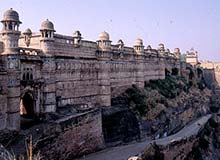 The Gwalior fort spreads out over an area of 3 square km, surrounded by concrete walls of sandstone. The Gwalior fort encloses three temples, six palaces and numerous water tanks. At a point of time Gwalior fort was regarded as North and Central India's most invincible fortress. The fort was built by Raja Man Singh Tomar in the 15th century. The fort of Gwalior has seen many ups and downs of history. In the course of almost five hundred years, the Gwalior fort went from one ruler to another.
The Gwalior fort spreads out over an area of 3 square km, surrounded by concrete walls of sandstone. The Gwalior fort encloses three temples, six palaces and numerous water tanks. At a point of time Gwalior fort was regarded as North and Central India's most invincible fortress. The fort was built by Raja Man Singh Tomar in the 15th century. The fort of Gwalior has seen many ups and downs of history. In the course of almost five hundred years, the Gwalior fort went from one ruler to another.  The Red fort (Lal Qila) at Delhi was built by Shah Jahan on the banks of river Yamuna. The Red fort at Delhi is one of the massive forts in India and is a witness to the heyday of the Mughal Empire. Shah Jahan built the Red fort as the citadel of Shahjahanabad, his new capital at Delhi. The Lal Quila or the Red fort rises above a wide dry moat in the northeast corner of the city of Shahjahanabad. Red fort's walls extend from two kilometers and differ in height from 18 meters on the river side to 33 meters on the city side.
The Red fort (Lal Qila) at Delhi was built by Shah Jahan on the banks of river Yamuna. The Red fort at Delhi is one of the massive forts in India and is a witness to the heyday of the Mughal Empire. Shah Jahan built the Red fort as the citadel of Shahjahanabad, his new capital at Delhi. The Lal Quila or the Red fort rises above a wide dry moat in the northeast corner of the city of Shahjahanabad. Red fort's walls extend from two kilometers and differ in height from 18 meters on the river side to 33 meters on the city side.